Occupation and Forced Subjugation Scenario
Adel Bashqawi
27 February, 2022
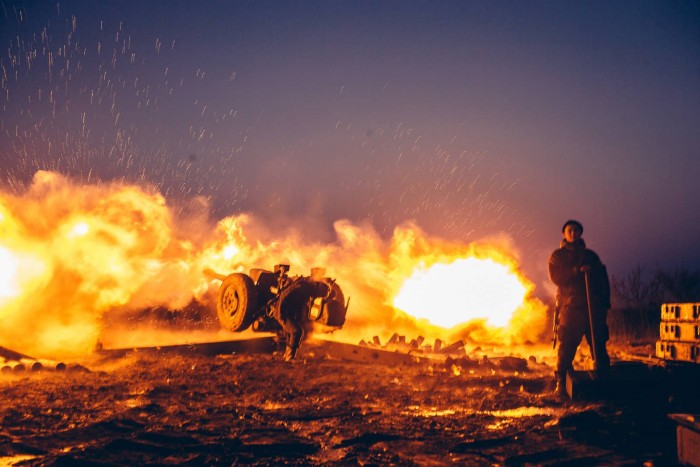
Preface
What is currently happening in the twenty-first century, specifically in Ukraine, the European member state of the United Nations, is nothing but a sequel to the process of repetition of series of undermining national governments. That contradicts the desire of their citizens, who elected them. These are considered blatant invasions and overrun operations, carried out by tyrant external forces that covet the homelands of others, to simulate violations that occurred in the past.
But it must be, even if takes long time, in the spirit of preserving the right to self-determination in freedom and independence, and to choose the future that suits the oppressed peoples, and in accordance with the legality adopted in the Universal Declaration of Human Rights, which includes the basic civil, political, economic, social and cultural rights that all human beings should enjoy, and that in accordance with relevant international laws and norms.
Speaking of misery, so naturally one thing led to another, it is appropriate in this regard to mention some similar events that occurred in the past after the Second World War. It should be noted here that these abuse and violations had positive effects on those peoples, and even the positive consequences extended to other regions and countries. The remarkable thing that everyone is aware of, is that the defunct Soviet regime destroyed itself as a result of its evil actions against vulnerable peoples and for their negative effects. This applies to the famous proverb: “Ignorance is the Worst Acquaintance.”
The Hungarian Revolution 1956: The control of the Soviet Union, which did not last longer than (69 years) over the regimes and governments of the countries that became part of the republics of the Soviet Union, and the countries with the socialist and/or communist system, was nothing but a terrifying period in the history of the peoples of these countries that had suffered extremely from Soviet intelligence (KGB) harassment, especially during the era of Joseph Stalin dictatorship, which they were called at the time, the countries of Eastern Europe Block.
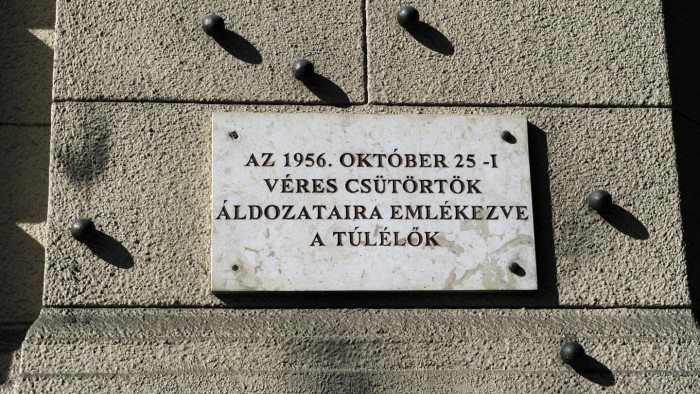
“A spontaneous national uprising that began 12 days before in Hungary is viciously crushed by Soviet tanks and troops on November 4, 1956. Thousands were killed and wounded and nearly a quarter-million Hungarians fled the country.” These demonstrations prompted the authorities to calm down and plan to get rid of the nationalist and reformist politicians at the appropriate time.
“The problems in Hungary began in October 1956, when thousands of protesters took to the streets demanding a more democratic political system and freedom from Soviet oppression. In response, Communist Party officials appointed Imre Nagy, a former premier who had been dismissed from the party for his criticisms of Stalinist policies, as the new premier. Nagy tried to restore peace and asked the Soviets to withdraw their troops. The Soviets did so, but Nagy then tried to push the Hungarian revolt forward by abolishing one-party rule. He also announced that Hungary was withdrawing from the Warsaw Pact (the Soviet bloc’s equivalent of NATO).” [1]
Prague Spring 1968: In 1968, Soviet tanks overran and occupied the city of Prague, the capital city of Czechoslovakia, thus controlling the entire country, which is one of the former Eastern European Block, which was practically under the direct control of the Soviet Union. This was done to abort the reforms that some national forces wanted to activate for setting a democratic system, which caused the authoritarian Soviet intervention to tighten the iron fist and to maintain the dictatorship of the Communist Party. Such actions were an extension for the Iron Curtain policy, which made the killing of people in cold blood on the walls of the Berlin Wall, separating at the time between East and West, a normal practice.
Promising future results were achieved after this spark had been set in motion and kept the torch of freedom, and the elimination of Soviet hegemony. It was not possible at that time to show a human face to the ruling forces. “600,000 soldiers from the Warsaw Pact forces invaded Czechoslovakia. Prague was not eager to make way, but the scattered student resistance was no match for the strength of the Soviet tanks.” [2]
The First Chechen War: The Russians were not satisfied with the encroachments and transgression they committed against the peoples and nations of the Caucasus Region during the imperial era, and after that the Soviet period. Rather, the same approach continued to prove the irrefutable truth that the same methods and steadfastness were applied to the same racist and colonial policies. They made it clear in public and to anyone who had doubts on what was reported or said about the truth of their crimes in the bitter and painful past.

“It began not so much as an invasion, but as a slouching stumble through mud and snow by frightened, ill-fed Russian conscripts, the hollowed-out remnants of a force that, before the collapse of the Soviet Union just three years earlier, had been the mighty Red Army. But the Russian troops who advanced from three directions into the rebellious region of Chechnya on Dec. 11, 1994, carried history-changing forces that have since reshaped Russia and the world. The Russian attack, initially in staggering disarray but then increasingly organized and brutal, signaled not just the start of the First Chechen War — a merciless conflict that killed tens of thousands of people, mostly civilians — but also the end of Russia’s liberal dream.” [3]
The Second Chechen War: In the second half of 1999, an environment of contradictions was created between the words and actions that the Russian authorities prepared and crystallized. However, they blamed some of the forces present in Chechnya, and thus perpetuated this reality on the Chechen arena. That was to provide the reasons and motives, to be published and broadcasted in the mass media. They created a compelling reason for launching, the second Russian-Chechen war, which they caused to spread devastation throughout Chechnya.
“The main cause of the second Chechen war must be sought in particular features of the current Russian political scene. The first war was needed in order to reelect President Yeltsin. This war is needed to raise the standing in the polls of the current prime minister, Vladimir Putin, whom President Yeltsin has publicly endorsed as his chosen successor. For the Russian army, the war is attractive because it gives the generals an opportunity to take revenge for their defeats in the Afghan war and in the first (1994-1996) Chechen war. They believe that perestroika and Gorbachev prevented their victory in Afghanistan, and that in Chechnya, Alexander Lebed, Russia’s free press, and public opinion were to blame.” [4]
Russo-Georgian War 2008: In August 2008, “Russian troops go on the offensive in South Ossetia and press on beyond its boundaries towards Gori, a town in central Georgia. They also head south of the Abkhazian-Georgian frontier in the west, while the Russian Black Sea sets up a maritime cordon blocking access to the Georgian coast including the coast of Poti … A subsequent report by the EU estimates that 850 people were killed in the conflict, including 365 South Ossetians, 170 Georgian troops, and 65 Russian soldiers, and that more than 100,000 people were forced to leave their homes.”[5]
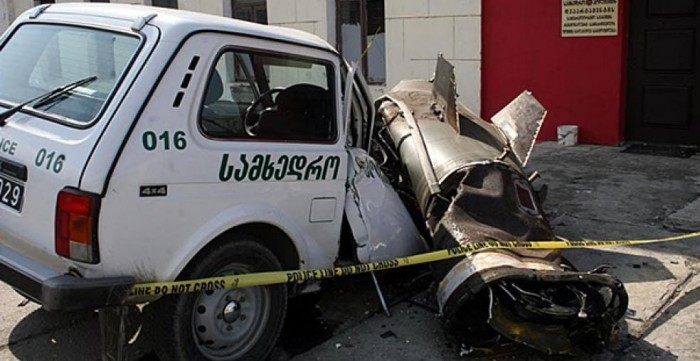
The Crisis in the Crimea and Eastern Ukraine 2014: “Groups of armed men whose uniforms lacked any clear identifying marks surrounded the airports in Simferopol and Sevastopol. Masked gunmen occupied the Crimean parliament building and raised a Russian flag, as pro-Russian lawmakers dismissed the sitting government and installed Sergey Aksyonov, the leader of the Russian Unity Party, as Crimea’s prime minister. Voice and data links between Crimea and Ukraine were severed, and Russian authorities acknowledged that they had moved troops into the region … On March 6 the Crimean parliament voted to secede from Ukraine and join the Russian Federation.”
Moreover, Eastern Ukraine was an operations field. In 2014, further moves were made in another takeover scene, in order to carve out more lands from eastern Ukraine. “In early April (2014), however, a NATO press briefing revealed the presence of an estimated 40,000 Russian troops, massed in a state of high readiness, just across Ukraine’s border. Subsequently, heavily armed pro-Russian gunmen stormed government buildings in the eastern Ukrainian cities of Donetsk, Luhansk, Horlivka, and Kramatorsk. In Kharkiv a group of ostensibly local gunmen mistakenly seized an opera house, believing it to be city hall. As was the case in Crimea, a number of these takeovers were executed by men with Russian equipment, in uniforms bearing no insignia, acting with military precision. In the city of Slov’yansk in the Donets Basin, a gun battle erupted as pro-Russian militiamen occupied buildings and established roadblocks.” [6]
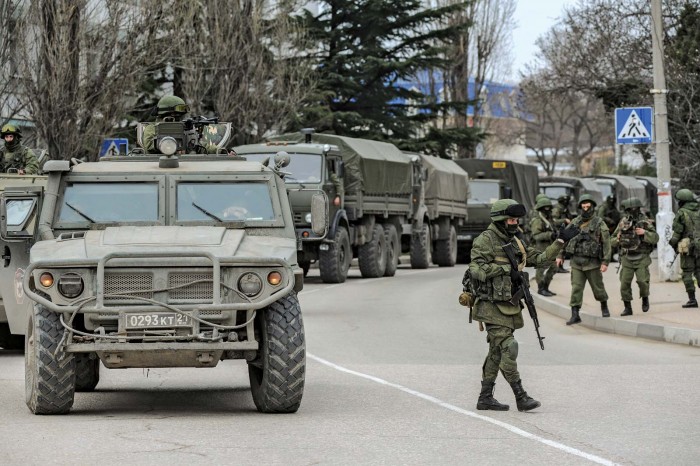
Miscellaneous: Russian military operations in Syria since 2015, has assisted the regime to survive the “civil war, which took many by surprise and raised questions about the potential for similar actions in other conflicts outside of post-Soviet Eurasia. The authors of this report assess where and under what conditions Moscow could intervene again by analyzing the factors that drive Russian decision making on intervention. In addition to the 2015 intervention in Syria, they examine four smaller-scale interventions in conflicts outside of Russia’s immediate neighborhood: Libya, Yemen, Afghanistan, and Syria itself before 2015.” [7]
Wagner Group: It forms an important armed group that has already a reputation of intervening in armed conflicts in several countries. “Despite official Russian denials there are accusations, including from the EU, that there are links between Wagner and the Kremlin. Analysts say that these ties enabled armed Wagner operatives to start working in the CAR after the deal with Russia was signed.”
The problems it faces as a result of the actions of its members, as well as the policies of different countries, as well as its relationship to the policy of the Russian state, the owner and operator of this company. “Wagner operatives, as well as government forces, have raped and robbed unarmed civilians in the country’s rural areas, the UN and French say. In a report in August (2021) about human rights abuses in the CAR, the UN documented more than 500 incidents in the year from July 2020. Among those were extrajudicial killings, torture and sexual violence.” [8]
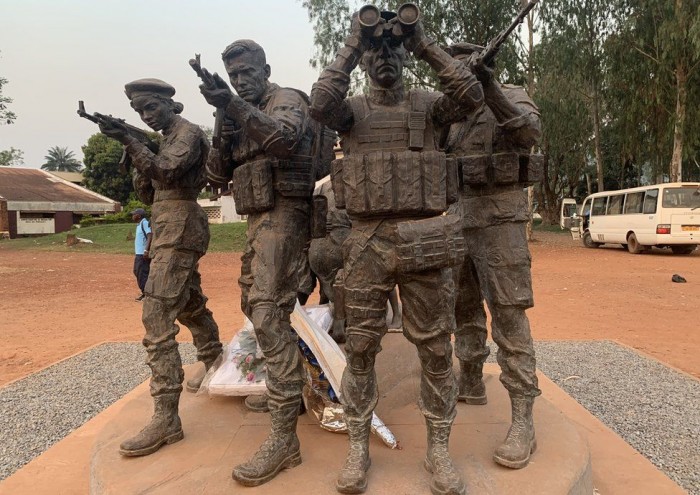
Wagner’s participation must be mentioned in the current civil war in Libya. Mercenaries from different countries are recruited to carry out combat missions, by utilizing all kinds of weapons. [9]

Conclusion:
We can only hope that this crazy war will be stopped, because only its promoters and all those who covet the homelands of their neighbors will gain from its continuation. “For to be free is not merely to cast off one’s chains, but to live in a way that respects and enhances the freedom of others.” — Nelson Mandela
********************
References
[1] https://www.history.com/this-day-in-history/soviets-put-brutal-end-to-hungarian-revolution
[2] https://www.history.com/this-day-in-history/prague-spring-begins-in-czechoslovakia
[3] https://www.nytimes.com/2019/12/10/world/europe/photos-chechen-war-russia.html
[4] https://reliefweb.int/report/russian-federation/second-chechen-war
[5] https://iwpr.net/global-voices/august-2008-russian-georgian-war-timeline
[6] https://www.britannica.com/place/Ukraine/The-crisis-in-Crimea-and-eastern-Ukraine
[7] https://www.rand.org/pubs/research_reports/RR3180.html
[8] https://www.bbc.com/news/world-africa-59699350
[9] https://www.dailysabah.com/world/africa/russian-wagner-group-to-send-300-syrian-fighters-to-libya
